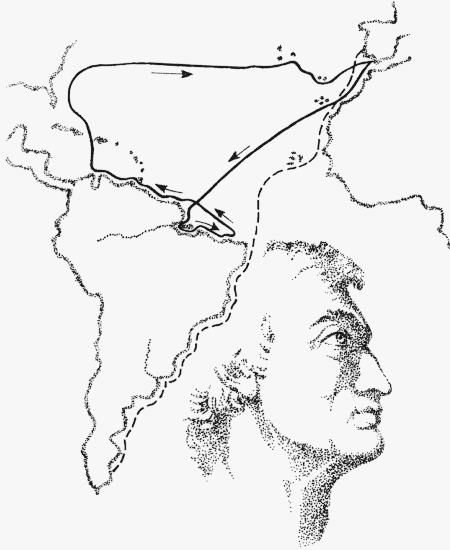Amerigo Vespucci
For a Spanish language version of this episode, Click Here.
Today, we name America. The University of Houston's College of Engineering presents this series about the machines that make our civilization run, and the people whose ingenuity created them.
Our continents are named after the Italian navigator Amerigo Vespucci instead of the Italian navigator Christopher Columbus. Why do you suppose that is? Who was Vespucci, and what did he do?
He was an Italian merchant, born in 1454 in Florence. He worked for the Medicis. The year Columbus made his first voyage, they sent Amerigo to handle their ship-outfitting business in Spain. Vespucci helped to outfit Columbus's third voyage. Finally he outfitted his own voyage to look for the Indian subcontinent (which had eluded Columbus). He sailed in 1499, seven years after Columbus first landed in the West Indies. Vespucci made trips in 1499 and 1502, and possibly a third in 1503.
During his first voyage, he explored the Northern Coast of South America to well beyond the mouth of the Amazon. He gave Asian place names like "Gulf of the Ganges" to the things he saw. He also made significant improvements in navigational techniques. On that trip he predicted Earth's circumference to within 50 miles.
But the breakthrough came on Vespucci's second trip, when he realized he wasn't looking at India at all but at an entirely new continent. He verified the fact by following the coast of South America down to within 400 miles of Tierra del Fuego. Columbus found the new world, but Vespucci recognized that it was a new world.
So who wrote Vespucci's Christian name, Amerigo, on the maps? Was it the King of Spain; our founding fathers; Vespucci himself? It was none of those. An obscure German clergyman and amateur geographer named Waldseemüller belonged to a literary club that published an introduction to cosmology in 1507. In it he wrote about the new land mass Vespucci had explored:
I see no reason why anyone should justly object to calling this part ... America, after Amerigo [Vespucci] its discoverer, a man of great ability
The name stuck. Later Waldseemüller thought better of the name, but he hadn't counted on the power of the new medium of print. There was no undoing what'd been set in type. When a second great land mass was found to the north, the names North and South America were applied to both continents. And we're left with an old question: "Who really rediscovered America on behalf of renaissance Europe?"
Was it the person who found it or the person who recognized it for what it was? That same riddle dogs all of science. Who "discovered" oxygen? Was it Priestly, who first isolated it, Lavoisier, who recognized it for a new substance but failed to see what the substance was? Or was it Scheele, who got it right before either Priestly or Lavoisier but didn't publish until after they had?
It's a hopeless question, of course. Columbus, Vespucci, Ericson, and that brave Asian who first walked off across the tendril of land that is now the Bering Strait. They all discovered this place. We might as well say, with Waldseemüller, "Why not call it America?"
I'm John Lienhard, at the University of Houston, where we're interested in the way inventive minds work.
(Theme music)
See your Encyclopaedia Britannica for more on Vespucci
Wilford, J. N., The Mapmakers, New York: Vintage Books, 1982.
Boorstin, D. J., The Discoverers: A History of Man's Search to Know his World and Himself. New York: Random House, 1983, Chapter 33.
Kuhn T., The Structure of Scientific Revolutions. 2nd ed. Chicago: University of Chicago Press, 1970.
This is a greatly revised version of Episode 43.

Vespucci and his two voyages -- the first as a solid line, the second as a dashed line
Drawing by Maria Zsigmond-Baca. By permission of Peter Gordon.